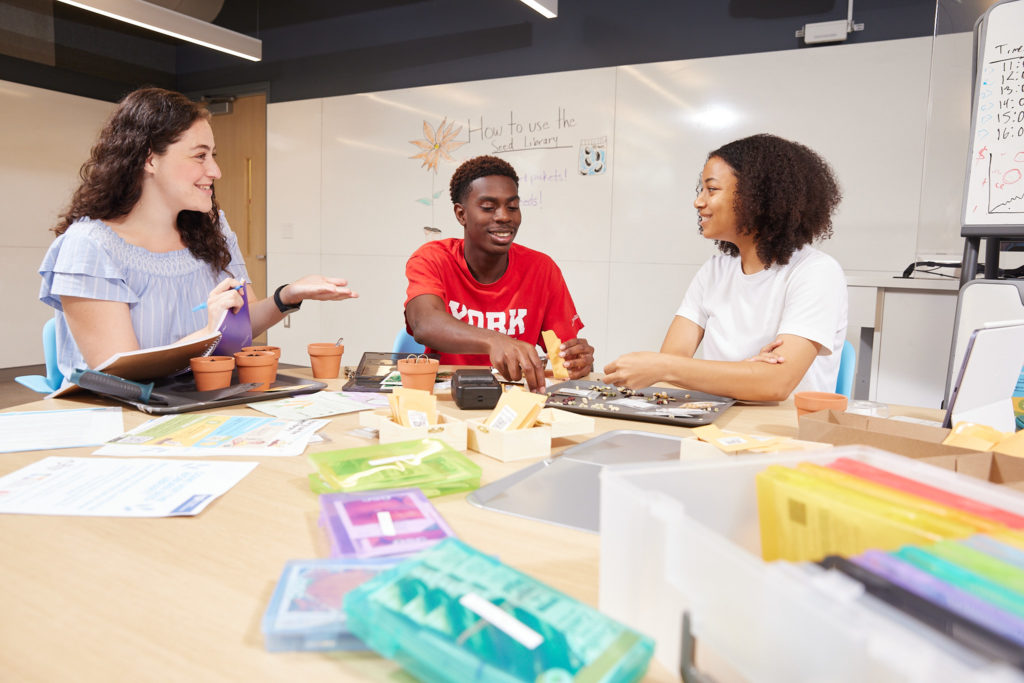
Mandisa Bromfield and Jafar Alberuni Hussain are seconded faculty members from the Toronto District School Board (TDSB). They are also Course Directors and Practicum Facilitators in the Faculty of Education (BEd) in the French as a Second Language program (FSL) at York's Glendon campus. In this piece, Mandisa and Jafar discuss how they plan to collaborate and co-teach this academic year and hope to effect positive change for the benefit of their students.

What sparked this collaboration?
As newly seconded faculty members, Mandisa and Jafar organically connected about courses and how they could support each other. As they had both recently read Cultivating Genius (2020) by Dr. Gholdy Muhammad and used her “Historically Responsive Literacy” framework with teachers and students at their school board, they wondered how they might be able to use her lesson plans with their students. Jafar reached out to Muhammad about a version of the book that was translated into French (by both Mandisa and Jafar). Muhammad responded with additional resources and support. By attending each other’s lectures, the idea was sparked to collaborate and co-teach to model this way of teaching to facilitate student learning dynamically and highlight the importance of collaboration in education.
What are the benefits of co-teaching?
One of Mandisa and Jafar’s best practices coming from the TDSB is to collaborate with colleagues for the benefit of students. Ultimately, they hope to model co-teaching and collaboration for their students and hope to inspire learning about diverse pedagogies and ways of knowing. “Taking the pedagogy of African oral traditions as a model urges a more cooperative learning space” (Dei and McDermott, 2019, p.6). There are also many benefits for both students and teachers when co-teaching. Students may benefit from exposure to different teaching styles, opportunities for differentiation, destigmatized integration of students with particular needs, seamless integration of accommodations and modifications, and generally, teachers serving as linguistic role models, especially in an FSL environment (Readysetcoteach, 2021). Other benefits in the university classroom include more chances for individual and small group discussions with two instructors present in that space. For instructors, the benefits of co-teaching include increased collegiality and teacher support, expanding professional expertise, decreasing the sense of isolation, etc. (Readysetcoteach, 2021). Working with a colleague allows for multiple entry points for exploring a concept as well as professional and personal development through the exchange of ideas.

What is the process?
Mandisa and Jafar began the process by pitching the idea of co-teaching to one another. They then shared their respective course syllabi so that they could determine a date and time, and subject for their lessons. After reviewing their schedules, they arranged for two co-teaching lessons. For the first lesson, Jafar would co-teach with Mandisa in her classroom and for the second, vice versa. In considering their co-teaching experience, they opted for the model of “Team Teaching'' whereby two teachers with complementing personalities share the teaching in an organic way. The goal of this model is to capitalize on expertise in their classes (Cassel, 2019). Mandisa and Jafar then met via Zoom to plan the format for their lectures. In both lessons, they prioritized a three-part approach where students are given the opportunity to activate prior knowledge, work through a task, and consolidate their learning in an authentic way.
What are our lessons?
In Mandisa’s course, EDPJ/JI 1000 - La langue et littératie aux cycles primaire, moyen et intermédiaire, they will introduce the notion of comprehensive literacy in the early, middle and intermediate years in FSL. Students will experience a read-aloud from the book Bien dans ta peau, Manushkin (2021). Afterwards, students will collaborate to engage in a timed-free-write learning opportunity using a format of their choice (e.g., paragraph writing, mind map, sketch notes, etc.).
In Jafar’s course, EDFR 3000 - L'enseignement et l’apprentissage du français cadre, they will examine and critique the Common European Framework of Reference for Languages (CEFR) as it pertains to the Intercultural Understanding expectations in the FSL curriculum. Students will have the opportunity to reflect and respond to critical-thinking questions such as:
● What is your understanding and/or experience of the Core French program?
● What is your understanding and/or experience with Cadre Européen Commun de Référence(CECR)?
Afterwards, TCs will unpack the Intercultural Understanding expectations in the FSL curriculum.
Both lectures do not have specifically assigned parts as Mandisa and Jafar will organically exchange ideas throughout and will encourage their students to attempt this type of experience with their colleagues in the near future. “Co-operative Education focuses on the instructional and pedagogic practices that promote collective learning and responsibilities among learners” (Dei and McDermott, 2019, p.6). Mandisa and Jafar aim to follow up with a reflection post to share their learning from this experience.
References:
Cassel, S. (October 8, 2019). How to Choose a Co-Teaching Model. Edutopia [Blog].URL:
https://www.edutopia.org/article/how-choose-co-teaching-model
Caudill, A. et al. (NOVEMBER 19, 2021). The Benefits of Coteaching (for both students and teachers). Readysetcoteach [Blog].URL:
https://www.readysetcoteach.com/the-benefits-of-coteaching-for-both-students-and-teachers/
Dei, George J. Sefa & McDermott, Mairi. (2019). Centering African Proverbs, Indigenous Folktales, and Cultural Stories in Curriculum.
